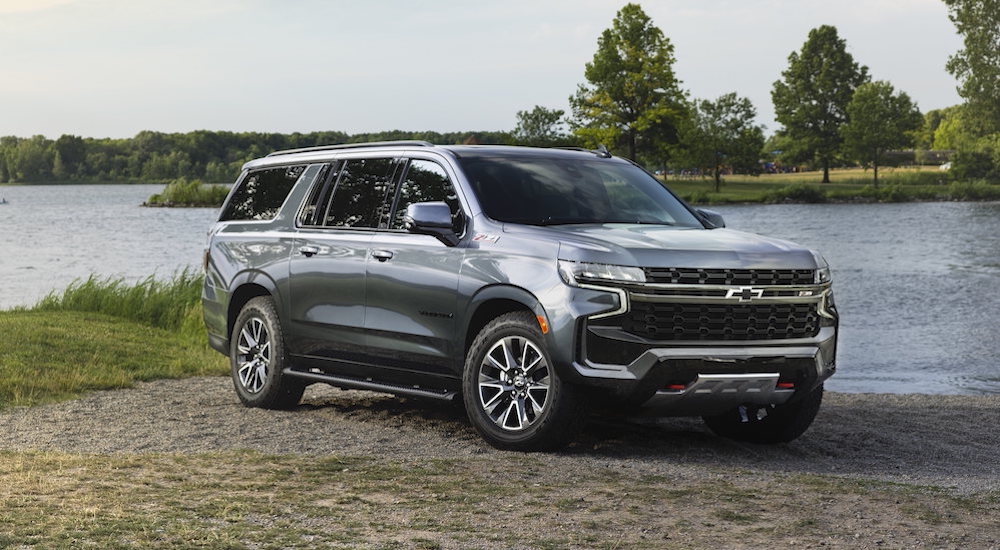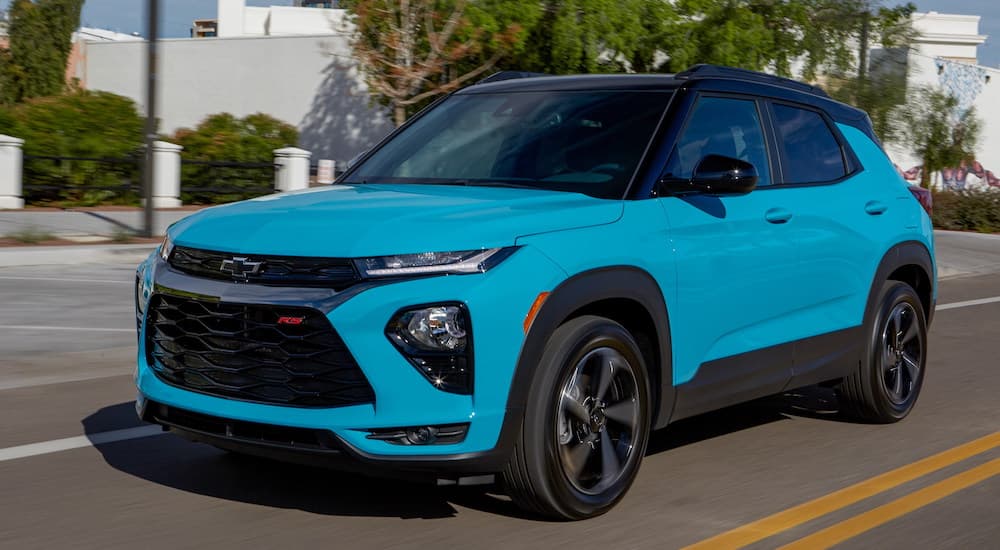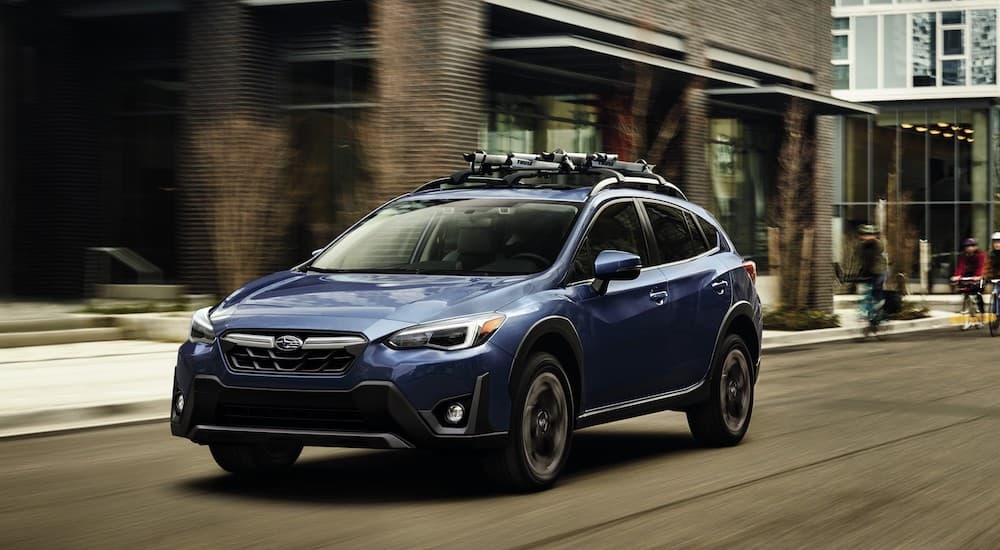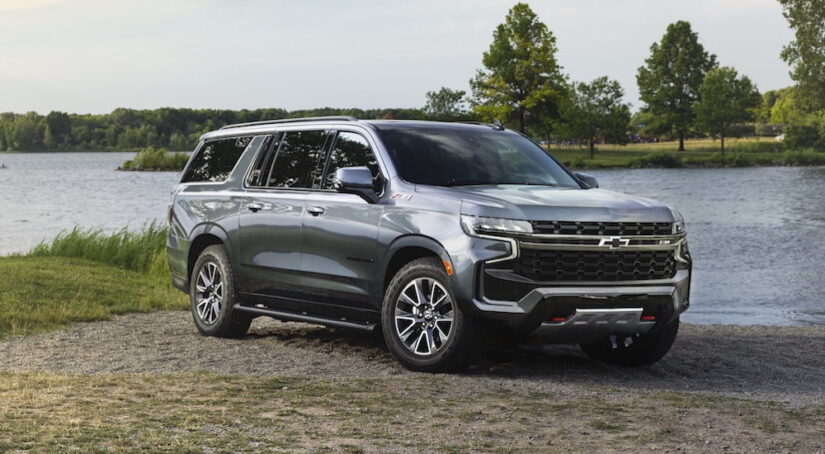
That’s a great question. I’m so glad you asked. Here’s the quick and simple answer: I don’t know; it really depends on what you’re looking for. I’ve got good news, however, in that I can take you through what’s out there and give you a sense of what different sizes of SUVs have to offer. This will help you figure out which SUV size is right for you before you head out looking for new or used SUVs for sale in Hayden, ID, and make it easier to find the right one.
Shopping for a car can be incredibly difficult and frustrating—or it can be quite easy and rewarding—depending on how much research you do ahead of time. The more you do before you ever set foot on a dealer’s lot, the easier it will be to get what you need and drive away happy. So this all begins with figuring out what you need and shopping accordingly. I can’t do it for you, but I can make it easier for you to get the right answer.
Different SUV Sizes and Classes
First of all, when we’re talking about different sizes and classes of SUVs, it’s important that you take some time to reflect on what will work best for you. It helps to think of this from the outside and consider the actual physical size of a potential SUV to ensure it can fit into your life. If you have a small garage or need to use street parking with tight spots, then a massive full-size SUV might be all wrong for you. On the other hand, if you have plenty of room in your life for a big vehicle, then a large model could be perfect.
Consider this: the Chevy Trailblazer (a subcompact crossover) is about 173 inches long and stands about 65 inches tall. By comparison, the Chevy Suburban (Chevy’s largest SUV) is more than 225 inches long and stands more than 75 inches tall. That’s a difference of more than four feet in length and almost a foot in height, which can have a huge impact on how well each of these vehicles fits into your life. You can see why I can’t just tell you which size or class would be best for you because there are a lot of factors to consider.

Those are two specific instances, but let’s quickly talk in general terms. As you’re looking at different vehicles, you’ll often see SUVs and crossover models referred to by different size classes or categories. This is a bit of shorthand that gives you a rough sense of how big the vehicle is—though these classes can also be important for things like fuel efficiency and how they’re categorized by the federal government. Unfortunately, when a website or manufacturer uses a size class to describe a vehicle, it’s not always based on a legal definition but instead is simply meant as a rough descriptor. Still, knowing the classes can help. You’ll typically find the following sizes used, in ascending order by size: Subcompact, Compact, Small, Midsize, Large, and Full-Size.
It’s worth noting there can be some overlap here, and not every manufacturer uses all of these terms, nor do they all use them in the same way. One brand might describe a vehicle as “compact,” while another brand describes their crossover of nearly identical size as “small,” so comparing them can be tricky. That’s why it helps to look at the actual specs and dimensions of a vehicle to get a real sense of its size. Still, you can use these terms to get a quick sense of what you’re looking at; for example, a subcompact model is likely the smallest one a brand offers, while a large SUV or full-size will be their biggest model.
The Seating Question: Two or Three Rows
As you’re looking at different vehicles and considering which size will work best for you, there’s an important secondary factor at play: seating. You can fit different numbers of passengers into different vehicles, depending on if you’re looking at a two-row crossover or a three-row SUV. The majority of the time, the size or class of the vehicle will clue you into the number of seats or rows you can expect to find inside it, but there are plenty of cases where this isn’t necessarily true, so you’ll have to pay attention to specs and details.
In general, two-row crossover SUVs will give you seating for up to five people: two up front and three on a bench seat behind them. I can’t think of any four-passenger crossovers with seating for just two people in the rear; they might exist, but it would be rather rare to encounter one. For the most part, you’ll find two-row seating in subcompact, compact, small, and most midsize models. If you only need seating for four or five people, these are the classes you can focus on—unless you need a big SUV, for other reasons, like gratuitous cargo space.
Where things get a lot trickier is when you start looking at three-row SUVs, which—as the name suggests—have three rows of seating rather than two. There are some midsize SUVs out there with three rows of seating; the third “row” will often be a pair of seats that are pretty cramped. This kind of third row can work well if you have little kids, but any adults that you stick in the rear seats are going to be rather unhappy about it. Usually, you’ll find three rows of seating in large and full-size models, so look for those if you want more than four full-size passengers along for the ride.
How many passengers? Well, that’s the tricky part. Some three-row models have seating for up to eight people: two up front, three in the middle, and three in the rear, with bench seating for the second and third rows. Other models might only have seating for seven passengers: usually two in the front, a pair of captain’s chairs for the second row, and a three-person bench in the rear. Of course, those midsize models I mentioned earlier might also have seven-passenger seating with two up front, three in the middle, and two in the back—or even six-passenger seating. Things get complicated, so it’s important to look at each vehicle’s specs.

Think About Cargo Volume
Finally, your choice of SUV size can have a big impact on how much cargo space you get inside the vehicle and how that space is delivered. For the most part, every SUV has a rear cargo area, but the size of that area can vary quite a lot from one model to the next; beyond that, you can usually lower seats not in use to gain greater cargo volume. By and large, the bigger the vehicle, the more cargo space you’ll get, but you always want to look at how it’s actually provided for you.
For example, the Subaru Crosstrek is a subcompact crossover that has about 20 cu.ft. of rear cargo volume and just over 55 cu.ft. of total cargo space behind the front seats. By comparison, the compact Subaru Forester has nearly 29 cu.ft. of rear cargo space and about 75 cu.ft. of total cargo volume inside. That’s a substantial increase from the smaller model. But the Subaru Outback, which is a midsize model, has just over 32 cu.ft. of rear cargo volume and a little over 75 cu.ft. of total cargo space. While that’s more than the Forester, it’s not a big increase.
Which Size Suits You?
If you need something small for getting through narrow city streets or fitting into a downsized lifestyle, then a subcompact or compact option is a great choice. On the other hand, if you have a growing family with six people and counting, then a large or full-size SUV with three rows of seating is going to better meet your needs. Just remember to look at the details and specs for any models you’re interested in.
Oh, and size can affect other things like fuel economy, which I didn’t even get into. Your best bet is to know what you need from a vehicle, then shop with that knowledge in mind so you can find the right model that delivers what you want.



